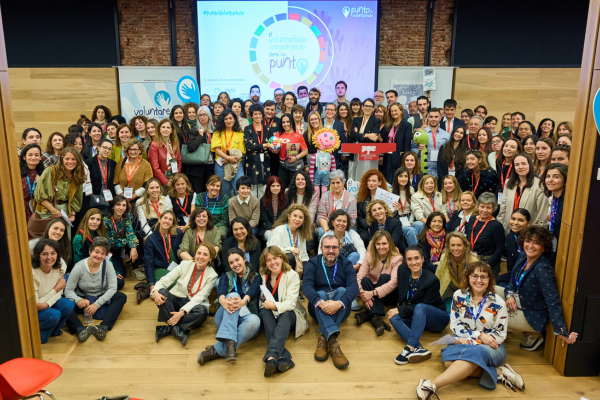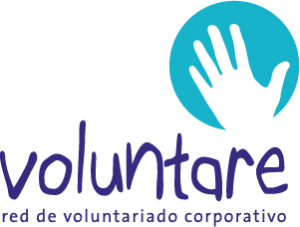Hi everyone,
So, finally I have finalized the blog entry to talk about my experience with EduBridge in Mumbai, India, during the month of April 2015 asPART
Who is EduBridge? EduBridge is an organization that focuses on building employableSKILLS



EduBridge is an organization started by a group of Indian Institute of Management (IIM) alumni and professors in October 2009 and it is headquartered in Mumbai, India. It aims at furthering the government’s objective of developing employable skills among the youth and connecting them with job opportunities within Corporate India by connecting corporates with talent from semi-urban and rural areas and vice versa.
With this, it has partnered with and has been approved by the National Skill Development Corporation (NSDC), an entitySETUP

I willWRITE
Corporate Social Responsibility at SAP and the Social Sabbatical program
But let’s start from the beginning. What is the SAP Social Sabbatical? This program was launched in 2012, and it is «a unique short term assignment for SAP Top Talents who work in international, cross functional teams to solve business challenges for the entrepreneurial and education sector in emergingMARKETS
The vision of SAP is «Help the world run better and improve people’s lives» and the Corporate Social Responsibility programs at SAP have the focus on equipping the world’s youth withSKILLS
– Building the capacity of innovative social enterprises that put young people on the path to successful (IT) careers
– Building a skilled

Back to the SAP Social Sabbatical, since this is getting very generic. Why did I end up in Mumbai? Well, there were many different locations worldwide for the SAP Social Sabbatical in 2014 / 2015. But given my many years working with customers, partners and colleagues from India, I thought it was time to get to know this country from a different perspective. So I was really lucky to be selected to be here!
Meet the SAP Social Sabbatical 2015 team in Mumbai with some additional SAP CSR and Pyxera Global colleagues in our first dinner together the night before the kick-off event!
Why EduBridge?
Well, now we also need a bit more of background on the selection of the different projects.
Corporate ProBONO
In every location, SAP generally chooses 4 different projects for the engagement. This selection is performed


Members of the different teams assessed several companies and organizations in Mumbai, and four projects were selected. EduBridge was one of them.
Before moving forward, I would like to leave you with some interesting links that you might find interesting if you would like to go deeper in some of these topics:
– The growing popularity of pro bono, on how employees, non-profits and the enterprises benefit from this type of program.
– Article in the New Global Citizen from Deirdre White, CEO of PYXERA Global, in which I learnt about the wrong that can be done under the idea of «Development» and how important it is to have the focus on «Purposeful Global Engagement».
– Last but not least, a fantastic TED Talk from Ernesto Sirolli called WANT
While reading some of these articles I could not help but remember some the words of Rafael Correa, the President of Ecuador, in an interview with the Spanish journalist Jordi Evole in his program «Salvados» in December 2014regarding the support that Ecuador receives from multinational corporations and how (for example) painting schools might not be the best use of the volunteers time and resources, since you can find enough workers in Ecuador that could do this.
Why did I join for the SAP Social Sabbatical?
Now that we have gone this far about the SAP CSR, Social Sabbatical, Global Engagement… it is time toSHARE

Well, here is my reason: I am a guy who believes that the P&L should not be the only motivation for a company to exist, neither should one get up every morning to go to work thinking only of their salary and bonus. In my opinion, it is everyone’s responsibility (companies of all sizes, governments of all levels, volunteers…. in general, people!) to help make the world become a better place.
So, along with my professional career, I have always been working in the areas of Diversity and CSR in different forms. Here are
– Working in the area of LGBT Diversity (for Lesbians, Gays, Bisexual and Transgender) since 2004! Some recent examples to highlight were «It Gets Better» global initiative from SAP in 2012, working with several German NGOs and my participation in an event hosted by the IE Business School in Madrid in 2014, joinlty with the US Ambassador to Spain.
– Being a volunteer manager for the Human
– Being a mentor of a social start-up in Berlin asPART
– Participating in the delivery of the «Increase your employability with SAP» program with the partner «Fundación Tomillo» in Madrid in 2014, to help unemployed people (big issue in the Spanish economy) rejoin the workforce withUPDATED

I guess the combination of this type of experience, together with my international work experience in the area of consulting in different companies and countries (see my LinkedIn profile if interested), is what got the colleagues in Corporate Social Responsibility to accept my application.
As part

And EduBridge could not have been a better match!
India, the economy and the job market
As a major country and one of the largest world economies, there is a lot being written about India and its economy. After doing some reading previous and during my engagement, I found really interesting the chapter «Connecting India’s youth to jobs» ofTHE BOOK
Here are

- India’s current labour market
is not knowledge intensive, dominated by traditional skills like farming and manual labour.
- Indian agriculture employees approximately half of its 484 million strong workforce (as of end of financial year 2012) but produces only a sixth or less of India’s GDP.
- On this topic, I found also very interesting this article in The Times of India, «Why it doesn’t pay to be a small farmer», from which I learned that 75% of the Indian farmers own on average less than 1 ha and work in a loss producing business model. This indicates that the immediate future of this sector is highly dependent on government investment
.
- On this topic, I found also very interesting this article in The Times of India, «Why it doesn’t pay to be a small farmer», from which I learned that 75% of the Indian farmers own on average less than 1 ha and work in a loss producing business model. This indicates that the immediate future of this sector is highly dependent on government investment
- Only 18% of India’s workforce has a regular salary and even less is part
of the organized workforce. Unorganized workforceACCOUNTS
for 90% of the total, but produces only 35% of the output. This means that the average Indian organized worker produces 17 times the value-add compared to an unorganized one. And to make things worse: due to the lowest return on the financial savings of the unorganized workers, these are
condemned to a life
-long working situation.
- Over the next 10 years, until 2025, 250 million people will be eligible to join the workforce: Providing to these young people decent income-generating opportunities will produce massive boom in India’s GDP. Failing to do so will mean (at the very least) a significant delay in pulling millions above the poverty line and condemning many more to a poorer life.
- A study conducted by the Ministry ofHUMAN
Resource Development shows that 97% of Indians finish the primary school, but only 66% go to secondary school (Class VI – X) and then even less, 31%, go to higher secondary school (Class XI – XII).
- A study commissioned by the NSCD (National Skill
Development Corporation) to evaluate the employment development in several industries until 2022, points out that the majority of the jobs will come from the following sectors:
- building, construction and real
estate (48.7 million)
- transportation, logistics, warehouse and packaging (41.1 millions)
- auto and auto components (35 million)
- building, construction and real
- It is important to highlight that most of the employment opportunities will be in lower-levelSKILLS
(Skill level 1: meaning skills
that can be acquired with short/modular and focused intervention -63%- or Skill level 2: skills that require technicalTRAINING
and supervision skills -18%-).
- Current excess of Engineers and MBAs: India in 2016 will graduate more engineers annually (1.5 million) than China (1.1 million) and the US (0.1 million) together. And the MBA cohort will increase to 0.4 million from 0.1 million in the same period of time. Actually, according to statistics, India needs around 1 million graduates a year and is producing 2.5 million.
- However, employers seem to still be unable to find graduates with the right skills. An interesting article on this topic is «Time for course corrections» in India Today, highlighting (among other topics) that, depending on the degree, employability can range from 10 to 26 %, while India’s industry is unable to fill up as much as 36% of the entry level positions!
- Over the last decade, India’s labour productivity has been rising in the range of 4-5 % per annum, which is half of the growth in China. And this is not due to low working hours but mainly due to lack of access to technology and education.
- For the author, the key takeaways / learnings of these observationsARE
: Creation of more jobs in the organized sector is required in industries that can employ the upcoming youth and there is a need for the creation of matching centers that will prepare the youth for these jobs. This is the basis for the concept ofVocational Training
.
Vocational Training in India
Simply put, Vocation Training is training that emphasizes skills and knowledge required for a particular job function or aTRADE
Continuing with the learnings fromTHE BOOK

- From one side, a candidate that is not well trained
but has spent some money on formal education will normally be reluctant to invest
further without clear job prospects.
- On the other side, employers are
unwilling to pick up untrained students and not very likely to invest in theirTRAINING
due to the uncertainty on whether the trained youth will stay in the company.
This highlights the need for training institutions with these having a shift in their focus from education to employability.
A quick look at the vocation training market


What does this mean for the companies willing to enter the lower skill-levels market

I hope that this now clarifies the need for the NSDC and the importance of their investments in equity funding. In its 2014 annual report, NSDC helped train

(Further information about NSDC and the vocational training can also be found in this pdf report, «Skill Development in India – Frequently Asked Questions»)
And now, finally… EduBridge and their amazing work
You have read aBRIEF

To be honest, while reading the «Connecting India’s youth to jobs» chapter of «The making of India» and the recommendations of the focus areas and key successFACTORS
EduBrige works on achieving the employment of youth in the Services industries. To be more specific in the Banking / Financial Services, in Retail Services and in the IT Services in the area of Business Process Outsourcing. Looking at the research from the NSDC and Kotak Institutional Equities these represents an estimate of 16.4 million jobs for skill levels 1 and 2 to be created in the next 15 years. Definitely a large market
When looking at employers in these industries, according to Akhilesh Tilotia, the main lack of skills they see is in the «Soft skills» area: communications, English language… etc.
Therfeore, the main product of EduBridge is TeamBridge in which students can take the full training of the GCIP (Government Certified Industry Professional) program and learn about Communication at work with Conversational English, The Art of Selling, Computers & Typing skills, Essential Analytical skills, Personality



In the first week of our assignment at EduBridge we were lucky enough to have full access to their Executive team working out of the Head Office

So, their main product is training the youth at their own EduBridge training centers all over India: who pays for this? Well, it can be both the state governments, with the dedicated programs to help employ the youth (as explained earlier in the blog entry) or the student himself or herself. I found quite amazing how the presentation to attract students explains to them the business case for this investment: comparison of theCOURSE
In a report prepared by Firefly Millward Brown Delhi for the NSDC in June 2013 (not found online), it was found out that theSKILLING

- LowENROLLMENTS
of students in skilling
institutes
- Employers hesitant to recruit such students
This is how EduBridge tackles bothISSUES
The studentENROLLMENT


One additional comment regarding schools and colleges: EduBridge is also very successful atTRAINING


In order for employers to trust the students that are


ThisPART

This is working so well that actually some corporations are taking a step further and request training from EduBridge to train some of their junior

Anand’s team is the one that has the responsibility of understanding the latest needs from the corporate customers in terms of necessary skills to ensure the most successful deployment of students as new employees in their organizations.
And who transforms this input into actual,UPDATED
And due to the scope of my work with the organization, I cannot finish this blog without mentioning Prakarsh Jain, the CFO.
If everything is working so well… why did EduBridge need the SAP Social Sabbatical program?
This was actually the question that I had in my mind in the first days of the assignment… but even when you have highly intelligent people and you are performing

EduBridge, being so successful, is growing a lot and their previous processes could have struggled when looking at the scalability of their way of working.
For obvious reasons I cannotSHARE

My main areas of work with them were related

Speaking today with one of the EduBridge executives while asking for his feedback, his comment was: «From time to time, every organization should get external consulting to look at your business, understand what your situation is and give you recommendations for improvement».
I am completely sure EduBridge would have been able to overcomeISSUES
My own experience: what did I get from the SAP Social Sabbatical program with EduBridge
So many things that it is difficult to know where to start! Trying to summarize the key messages that I take:
- A company can have a focus on achieving a good P&L result and still have mainly a social focus. This is something that Girish and his team have taught by seeing the level of passion they put into helping improve the situation of the youth in rural and semi-urban India while still running a business!
- It is amazing what can be achieved in the area of youth employment if governments choose the right focus: Coming from a country like Spain where the unemploymentRATE
, especially in the youth, is unfortunately in historically high levels, it has been a pleasure for me to work together with a company that has as main business solving this problem.
- But not only with EduBridge: on April 17, Pyxera Global organized for the participants of the SAP Social Sabbatical a Service day in cooperation with the Tata Institute of Social Sciences. The TISS, together with the Indian Ministry of Youth Affairs & Sport and the Office
of Advisors to the Prime Minister onSKILL
Development, run the NUSSD (National University Students’ Skill Development) program. AsPART
of this program, cooperation with corporations is key. That is the reason why SAP employees were asked to come and spend the morning with undergraduates of the Sree Narayan Guru and Acharya Marathe Colleges helping them how to prepare, behave during and follow up after a job interview.
- But not only with EduBridge: on April 17, Pyxera Global organized for the participants of the SAP Social Sabbatical a Service day in cooperation with the Tata Institute of Social Sciences. The TISS, together with the Indian Ministry of Youth Affairs & Sport and the Office
- Visionaries are always more progressive in terms of acceptance of diversity in the ways of life
: I mentioned earlier in the blog the type of work that I do in the area LGBT Diversity. Coming to India, a country wherehomosexuality is not only not socially accepted but it is even illegal, I was concerned about how my sexual orientation could affect my work relation
with the EduBridge executive team. For this reason it took me a bit longer than usual to come out, but once the conversations had moved into thePERSONAL
area for all of us, I did so. I must say none of them had a bad reaction towards this, and were even interested in my perspective about the situation for the gay community in Mumbai, since I was lucky enough to get to know some cool gay guys (that I hope to keep as friends for the years to come!). I guess that if youARE
very smart men and women like EduBridge’s executive team, having a privileged education, and decide to change
your careers in large, successful corporations to help unemployed youth get jobs, you understand what inclusion means in allLIFE
aspects.
I hope you have found this reading interesting! If you have any comments or questions, feelFREE
Miguel (@macpaz10)
Source: SAP Community Network




